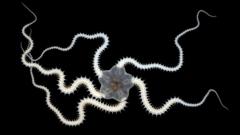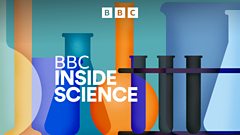
Site Map
"True navigation begins in the human heart. It's the most important map of all"- Elizabeth Kapu'uwailani LindseyPages
Posts by category
- Category: ACTIVITY
- The Royal Observatory: A Family Day Out Where Time Begins | ACTIVITY
- ACTIVITY | The Great Exhibition Road Festival: A Celebration of Science, Art, and Innovation | ACTIVITY
- ACTIVITY | Exploring Wonder and Discovery: A Journey Through the Science and Industry Museum in Manchester | ACTIVITY
- ACTIVITY | Exploring the Wonders of Kew Gardens: A Paradise for Young Explorers | ACTIVITY
- ACTIVITY | Unraveling the Marvels of the Twist Museum in London | ACTIVITY
- ACTIVITY | The Lyrid Meteor Shower: An April Sky Spectacle | ACTIVITY
- Category: AI
- Revolutionizing Antivenom: The Quest to Neutralize Snake Venom with De Novo AI Designed Proteins | AI
- Stability Oracle: A Powerful Tool for Engineering Stable Proteins | AI
- Responsible AI in Medicine: Ensuring Clinical Validation and Ethical Implementation | AI
- Autonomous vs Human-Driven Vehicle Accidents: What the Data Reveals | AI
- Predicting Cancer Risk with Digital Health Records | AI
- AI | Personalizing Cancer Care with Artificial Intelligence | AI
- AI | MHRA – Harnessing New Technology While Ensuring Public Safety? | AI
- AI | Artificial Intelligence and the Future of Healthcare – EFPIA | AI
- AI | Hallucinations and Illusions of AI in Science | AI
- Category: Conference
- Category: Editorial
- Beyond Inflation: Rethinking NICE’s Cost‑Effectiveness Threshold for the NHS | Editorial
- Dear World Leaders, A Clarion Call to Action: Addressing the Peril of Antarctic Sea Ice Loss | Editorial
- Unveiling Injustice: The Imperative of Addressing Racism in Global Child Health | Editorial
- The Connectome Conquest: Mapping the Brain’s Secrets | Editorial
- The NHS at a Crossroads: Restoring Britain’s National Health Service | Editorial
- The First COVID-19 Inquiry Report is Scathing of the UK’s Resilience & Preparedness for the Pandemic | Editorial
- The Rising Tide of Retractions | Editorial
- The U.K.’s Darkest Medical Scandal | Editorial
- Cracking Open the Neural Black Box | Editorial
- Rethinking Progress in an Age of AI | Editorial
- Category: Health
- Longer Remission Without Chemo? The ENRICH Trial and MCL Care | Health
- Rethinking Suicide Prevention: A Public Health Approach to a Global Problem | Health
- Outwitting the Fungal Invaders: How Pathogens Hijack Our Immune Defenses | Health
- Wonder drugs? Examining the benefits of GLP-1 receptor agonists | Health
- Meat and Metabolic Health: The Global Story | Health
- The Digital Dilemma: How Screen Time Shapes the Developing Brain | Health
- Rethinking the Role of Oxygen Saturation in Assessing Childhood Illness | Health
- Gut Bacteria May Hold the Key to Preventing Severe Infections | Health
- Busting the Myths of Intermittent Fasting | Health
- The Future of Global Health: Forecasting Disease Burden to 2050 | Health
- Semaglutide: A New Weapon Against Alcohol Use Disorder? | Health
- Gene therapy reversing hereditary deafness? | Health
- Chewing Tobacco’s Grip on Football: The Growing Problem of Snus Use Among Players | Health
- Unlocking Precision Cancer Care through Whole Genome Sequencing | Health
- U.K. Whooping cough cases continue to rise | Health
- Preventing Unnecessary Chemotherapy after Surgery for Early Breast Cancer | Health
- Breaking Through Food Allergy Barriers with SLIT | Health
- A Breakthrough Treatment for Chronic Sinusitis | Health
- AI | Detecting COVID-19 in Lungs with Deep Learning | Health
- Understanding the Silent Killer: Respiratory Syncytial Virus | Health
- The Link Between Diet, Metabolism and Vaccine Effectiveness | Health
- Revealing the Hidden Complexities of Fasting Blood Sugar | Health
- The Growing Recognition of Inflammation in Parkinson’s Disease | Health
- Microplastics in Our Midst: New Insights into Environmental and Health Impacts | Health
- Unmasking COVID-19’s Impact on the Mind | Health
- Last gasp hotel | Health
- Warm plastic water bottle danger? | Health
- Category: WellBeing
- Category: Pharma
- Targeting Cellular Senescence: A New Frontier in Combating Cancer and Age-Related Diseases | Pharma
- Navigating the New Frontier: The First Abridged Complaint under the 2024 ABPI Code | Pharma
- A New Era in US Schizophrenia Treatment: The FDA Approval of COBENFY | Pharma
- The Rise and Fall of Oxbryta: A Cautionary Tale in Sickle Cell Disease Treatment | Pharma
- The Evolving ABPI Code: Strengthening Ethical Standards in the Pharmaceutical Industry? | Pharma
- Blockchain Revolutionizing the Pharmaceutical Industry: Ensuring Transparency, Security and Efficiency | Pharma
- The UK’s Prescription for the Future? | Pharma
- The Importance of Accurate and Balanced Promotional Claims: Lessons from the PMCPA Trelegy Case | Pharma
- The Promise of CAR T-Cells: Progress and Challenges in Cancer Immunotherapy | Pharma
- A New Purpose for an Old Drug | Pharma
- Antibodies Revolutionizing Cancer Care: Past Successes and Future Promise | Pharma
- Why Are Medical Staff Liasions’s Interactions Different? | Pharma
- Ensuring Accuracy of Prescribing Information in Today’s Digital Landscape | Pharma
- Lessons for Pharma from a Pre-Approval Social Media Misstep | Pharma
- GlaxoSmithKline Files Lawsuit Against Pfizer-BioNTech Over COVID-19 Vaccine Technology | Pharma
- Cracking the Code of Bitter Taste Receptors | Pharma
- Unraveling the Mechanisms Behind Resistance to Novel Cancer Therapies | Pharma
- Guiding Pharma Through the Complexities of Social Media | Pharma
- ‘Promoting’ Transparency and Responsibility in Pharma | Pharma
- Paint it yellow for the real world | Pharma
- Prescribing on your gut? | Pharma
- Category: Science
- Hydroclimate Volatility: Navigating Extremes on a Warming Earth | Science
- Buried Treasure: How Martian Clays Could Unlock the Planet’s Mysterious Past | Science
- Turning Lignin into Jet Fuel: A Sustainable Aviation Breakthrough | Science
- Quenching the Thirst of the Arid World: Compact Fuel-Powered Atmospheric Water Harvesters | Science
- A Single Therapy for Asthma: Engineering Long-Lived T Cells with Multi-Targeting Abilities | Science
- Hidden Dangers Under Antarctic Ice | Science
- Gene Editing Gives Hope for Inherited Blindness | Science
- A Wild Orangutan’s Self-Medication Secret | Science
- Measuring the Thickness of Water’s Airy Interface | Science
- The Mystery of the Disappearing Fireflies | Science
- Fighting the Nanoplastics | Science
- AI | Can AI Assist in Peer Review? | Science
- AI | Will AI Diminish the Rigor of Peer Review? | Science
- Imaging Atoms in Quantum Wave Motion | Science
- Ocean Productivity Declines as Marine Heatwaves Intensify | Science
- Towards Printing the Brain | Science
- Deceit and theft in micro-plastic research? | Science
- The long road of signalling research | Science
- The new premier league players | Science
- A new way to calibrate the postmortem clock? | Science
- Rock solid: Trapping carbon dioxide | Science
- Resurrection of the biomorphs | Science
- Category: Technology
- Weaving Electronics into Living Systems | Technology
- From disorder to order: Flocking birds and ‘spinning’ particles | Technology
- Cracking the Code of Quantum Mechanics | Technology
- Bridging the Gap Between Semiconductor Photons and Atomic Memory | Technology
- Back to the black stuff? | Technology
- Obama’s supercomputer order gets a step closer | Technology
Type
Module Width
Scope
Project Categories

- Deep-sea mining tests impact over a third of...on December, 2025 at 8:00 am
- Deep-sea mining tests impact over a third of...on December, 2025 at 8:00 am
- Top UK scientist says research visa restrictions...on December, 2025 at 1:20 am
- BBC Inside Scienceon December, 2025 at 5:00 pm
- Volcanic eruption may have triggered Europe's...on December, 2025 at 4:00 pm
- GB Energy plan to focus on historical oil and gas...on December, 2025 at 6:12 am
- Waste from UK's largest opencast mine 'poses...on December, 2025 at 6:00 am
- Mayor says too many families are 'working poor'on December, 2025 at 4:46 pm
- Death toll in Indonesia floods passes 600on December, 2025 at 7:10 am
- Cats became our companions much later than you...on November, 2025 at 8:02 pm
- BBC Inside Scienceon November, 2025 at 5:00 pm
- More North Sea drilling to be allowed in new...on November, 2025 at 10:32 am
Header Banner: Captain James Cook FRS RN (7 November 1728 – 14 February 1779) was a British explorer, navigator, cartographer, and captain in the Royal Navy. Cook made detailed maps of Newfoundland prior to making three voyages to the Pacific Ocean, during which he achieved the first recorded European contact with the eastern coastline of Australia and the Hawaiian Islands, and the first recorded circumnavigation of New Zealand.
During the Seven Years’ War, Cook served in North America as master of Pembroke (1757).In 1758 he took part in the major amphibious assault that captured the Fortress of Louisbourg from the French, after which he participated in the siege of Quebec City and then the Battle of the Plains of Abraham in 1759. He showed a talent for surveying and cartography, and was responsible for mapping much of the entrance to the Saint Lawrence River during the siege, thus allowing General Wolfe to make his famous stealth attack on the Plains of Abraham.
Cook’s surveying ability was put to good use mapping the jagged coast of Newfoundland in the 1760s, aboard HMS Grenville. His five seasons in Newfoundland produced the first large-scale and accurate maps of the island’s coasts and were the first scientific, large scale, hydrographic surveys to use precise triangulation to establish land outlines. Cook’s map would be used into the 20th century—copies of it being referenced by those sailing Newfoundland’s waters for 200 years.










